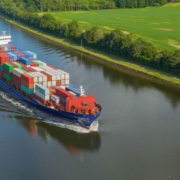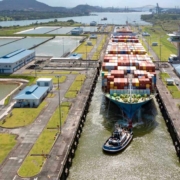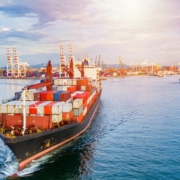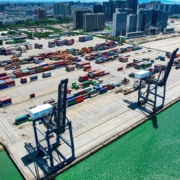Antwerp Euroterminal: Innovation in Onshore Electric Power for Deep-Sea Vessels
Antwerp Euroterminal (AET) has taken a significant step towards sustainability by installing the first onshore electric power connection for deep-sea vessels in Belgium. This new facility, expected to be operational by 2026, will allow ships docked at the port to access electricity in an eco-friendly and silent manner, complying with international ISO standards.
A Belgian Milestone
The implementation of onshore electric power at AET marks a milestone in Belgium. This technology enables moored vessels to connect to the local electrical grid via a power outlet on the dock, significantly reducing CO2 emissions, nitrogen oxides, sulfur oxides, and particulate matter, thereby improving air quality and reducing environmental noise.
AET will install two fixed connections for onshore electric power, specifically for Ro-Ro and Con-Ro vessels. Although the European regulation requiring onshore electric power for container ships by 2030 does not include Ro-Ro and Con-Ro vessels, AET has decided to be proactive and offer this infrastructure, becoming the first terminal in the Port of Antwerp-Bruges, and in Belgium, to do so.
HOPaS Consortium: Innovation and Collaboration
The HOPaS consortium (High Voltage Onshore Power As a Service), composed of Techelec, Yuso, and Whitewood, will be responsible for the investment, installation, and operation of this innovative onshore power solution at AET. The Port of Antwerp-Bruges will facilitate this deployment, reinforcing its commitment to sustainability.
Green Power on Land
The installation will feature two onshore connections with a total capacity of 5MW, primarily designed for Grimaldi’s new Ro-Ro vessels. This project, involving an investment of between 25 and 30 million euros, has received a 4 million euro grant from the Flemish innovation agency (VLAIO). The electricity will initially come from three wind turbines installed at the terminal and operated by Wind aan de Stroom, supplemented by solar panels on the parking lot roof and two additional planned wind turbines. The green energy produced will be stored in a battery system to optimize its use.
Towards a Greener Port
The introduction of onshore electric power at AET is a crucial part of the Port of Antwerp-Bruges’ greening strategy. Currently, there are numerous connection points for barges and tugboats, and electricity on the dock is expected to be available for cruises in Zeebrugge by 2026. Additionally, the port has committed to providing onshore electric power for the largest container ships by 2028.
The Importance of Sustainability in Ports and Logistics
Sustainability in the port and logistics industry is not just a trend but an urgent necessity. Ports are pivotal hubs in global trade, facilitating the transport of essential goods and materials. However, they are also significant sources of polluting emissions due to loading and unloading operations, vessel traffic, and associated land transport.
Adopting sustainable technologies like onshore electric power not only helps mitigate the environmental impact of port operations but also improves the quality of life for communities nearby by reducing air pollution and noise. This approach is not only beneficial for the environment but can also enhance the competitiveness of ports by aligning with consumers’ and regulators’ growing sustainability expectations.
The logistics and port industry have the responsibility and opportunity to lead the way towards a more sustainable future. Investments in green infrastructure and clean technologies not only contribute to environmental protection but can also generate long-term savings and create new business opportunities. Transitioning to more sustainable practices is essential to ensure the resilience and economic viability of these sectors in the future.
For more insights on maritime industry, visit our website.
Source: Port of Antwerp Bruges









